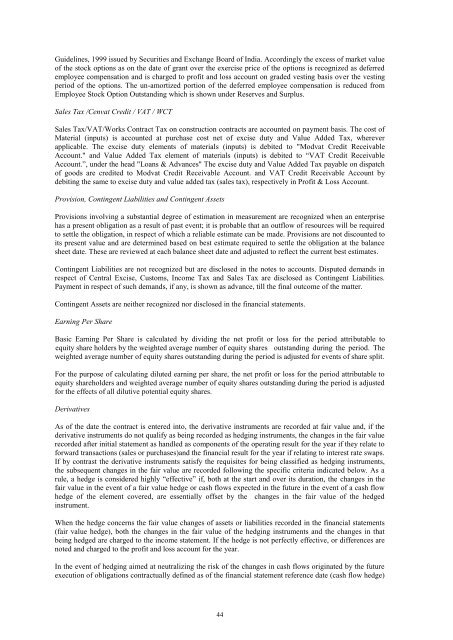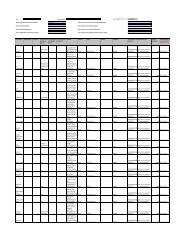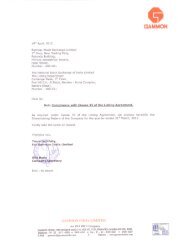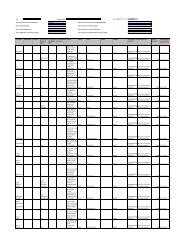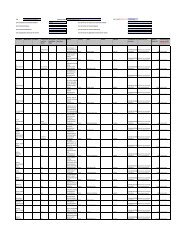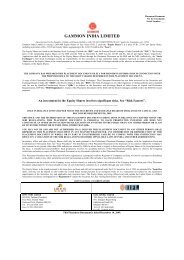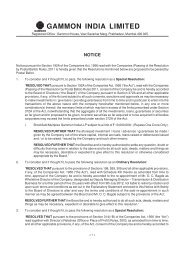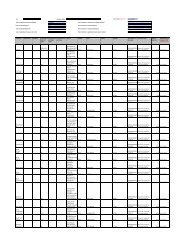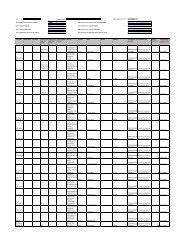GAMMON INDIA LIMITED
GAMMON INDIA LIMITED
GAMMON INDIA LIMITED
You also want an ePaper? Increase the reach of your titles
YUMPU automatically turns print PDFs into web optimized ePapers that Google loves.
Guidelines, 1999 issued by Securities and Exchange Board of India. Accordingly the excess of market value<br />
of the stock options as on the date of grant over the exercise price of the options is recognized as deferred<br />
employee compensation and is charged to profit and loss account on graded vesting basis over the vesting<br />
period of the options. The un-amortized portion of the deferred employee compensation is reduced from<br />
Employee Stock Option Outstanding which is shown under Reserves and Surplus.<br />
Sales Tax /Cenvat Credit / VAT / WCT<br />
Sales Tax/VAT/Works Contract Tax on construction contracts are accounted on payment basis. The cost of<br />
Material (inputs) is accounted at purchase cost net of excise duty and Value Added Tax, wherever<br />
applicable. The excise duty elements of materials (inputs) is debited to "Modvat Credit Receivable<br />
Account." and Value Added Tax element of materials (inputs) is debited to ―VAT Credit Receivable<br />
Account.‖, under the head "Loans & Advances" The excise duty and Value Added Tax payable on dispatch<br />
of goods are credited to Modvat Credit Receivable Account. and VAT Credit Receivable Account by<br />
debiting the same to excise duty and value added tax (sales tax), respectively in Profit & Loss Account.<br />
Provision, Contingent Liabilities and Contingent Assets<br />
Provisions involving a substantial degree of estimation in measurement are recognized when an enterprise<br />
has a present obligation as a result of past event; it is probable that an outflow of resources will be required<br />
to settle the obligation, in respect of which a reliable estimate can be made. Provisions are not discounted to<br />
its present value and are determined based on best estimate required to settle the obligation at the balance<br />
sheet date. These are reviewed at each balance sheet date and adjusted to reflect the current best estimates.<br />
Contingent Liabilities are not recognized but are disclosed in the notes to accounts. Disputed demands in<br />
respect of Central Excise, Customs, Income Tax and Sales Tax are disclosed as Contingent Liabilities.<br />
Payment in respect of such demands, if any, is shown as advance, till the final outcome of the matter.<br />
Contingent Assets are neither recognized nor disclosed in the financial statements.<br />
Earning Per Share<br />
Basic Earning Per Share is calculated by dividing the net profit or loss for the period attributable to<br />
equity share holders by the weighted average number of equity shares outstanding during the period. The<br />
weighted average number of equity shares outstanding during the period is adjusted for events of share split.<br />
For the purpose of calculating diluted earning per share, the net profit or loss for the period attributable to<br />
equity shareholders and weighted average number of equity shares outstanding during the period is adjusted<br />
for the effects of all dilutive potential equity shares.<br />
Derivatives<br />
As of the date the contract is entered into, the derivative instruments are recorded at fair value and, if the<br />
derivative instruments do not qualify as being recorded as hedging instruments, the changes in the fair value<br />
recorded after initial statement as handled as components of the operating result for the year if they relate to<br />
forward transactions (sales or purchases)and the financial result for the year if relating to interest rate swaps.<br />
If by contrast the derivative instruments satisfy the requisites for being classified as hedging instruments,<br />
the subsequent changes in the fair value are recorded following the specific criteria indicated below. As a<br />
rule, a hedge is considered highly ―effective‖ if, both at the start and over its duration, the changes in the<br />
fair value in the event of a fair value hedge or cash flows expected in the future in the event of a cash flow<br />
hedge of the element covered, are essentially offset by the changes in the fair value of the hedged<br />
instrument.<br />
When the hedge concerns the fair value changes of assets or liabilities recorded in the financial statements<br />
(fair value hedge), both the changes in the fair value of the hedging instruments and the changes in that<br />
being hedged are charged to the income statement. If the hedge is not perfectly effective, or differences are<br />
noted and charged to the profit and loss account for the year.<br />
In the event of hedging aimed at neutralizing the risk of the changes in cash flows originated by the future<br />
execution of obligations contractually defined as of the financial statement reference date (cash flow hedge)<br />
44


